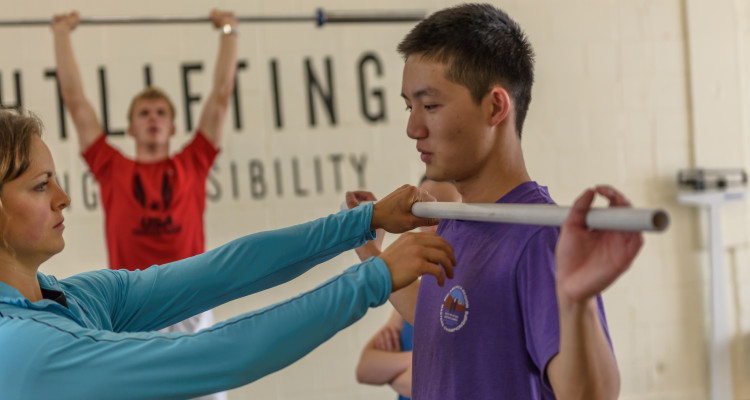What separates good athletes from great ones? Power. Surprisingly, this same quality can help us to stay fit, functional, and even safe as we age.
If your current training program doesn’t contain any exercises for power development, you may be missing out on a valuable way to maximize your health and fitness.
Why should I care about power training?
While training for power is a common practice among athletes, everyone can benefit from incorporating this type of training into their fitness routine. Research has shown that older adults with greater muscular power are more independent and have a reduced risk of falls.
Related: Experts Rethink the Science Behind Getting Six Pack Abs
Training for power also helps build and maintain Type II muscle fibers. These fibers are capable of greater force production and greater hypertrophy (growth) than Type I fibers, and have been shown to atrophy (shrink) at a greater rate as we age. Incorporating power training can help preserve these muscle fibers and slow age related losses in strength, power, and muscle mass.
What is power?
In simplest terms, power is the rate at which work is performed. Moving an object requires work: you can increase the amount of work performed by moving a heavier object or increasing the distance an object is moved. However, the real key to increasing power is in performing the movement quickly and explosively.
But aren’t gym exercises supposed to be “slow and controlled?”
For those new to training, it is important to focus on the quality of movement. Slow movements build endurance and can be a great way to learn proper body mechanics before attempting to move more quickly. As an individual’s skill and body awareness improves, however, faster movements can be added to an exercise routine to improve power without sacrificing safety or movement quality.
So how do I develop power?
it is very difficult to move an extremely heavy weight quickly, power exercises are best performed with moderate loads, and there are many power exercises that only require the weight of your own body.
Are there any safety considerations?
Because the faster movements utilized in power training typically involve higher forces, it is important to use proper progressions and prepare your body before moving to more advanced power exercises. Building a base level of muscular strength with resistance training can increase the safety and effectiveness of power exercises. In fact, the National Strength and Conditioning Association recommends that an athlete should be able to squat 1.5 times his or her body weight before performing certain advanced training techniques, such as depth jumps, which involve dropping down from a box to rebound quickly into a jump. Building strength and introducing power exercises gradually can help to keep training safe.
What are the best exercises for developing power?
For those interested in maximizing athletic performance, Olympic Weightlifting and plyometric exercises are considered the gold standard in power development. These highly skilled athletic movements can take years to master, require detailed instruction, and should only be learned with the help of a qualified Olympic Weightlifting or sports performance coach.
What if I’m not an athlete?
While many individuals enjoy training like an athlete, it is not necessary for everyone to perform Olympic Weightlifting or plyometrics for general fitness. Fortunately there are also many simple ways to add power training to your fitness routine. Throwing and jumping activities are relatively easy to learn and not only help with power development, but also add variety and fun to your training!
Related: I Came to be Awesome at Crossfit, Not Skinny
Instead of performing a slow chest press or bench press, try incorporating medicine ball chest passes and emphasize throwing the ball as fast as possible. For the leg press or squat, you can substitute a squat jump to develop explosive power in the hips and legs. Perform these movements earlier in your workout so that you are not overly fatigued, and remember to focus on speed and quality of movement rather than quantity.
Could I be too old to train for power?
No. Training to improve or maintain your power output should be a life-long journey. For older adults who are unable to jump, there are many non-impact exercises that can be performed explosively to improve power development. Some of the research studies on power training with older adults have used exercises as simple as standing up from a chair quickly.
How do I get started?
Because everyone is different, there is no one-size-fits-all power program. Working with a qualified coach can help you determine the exercises and volume of training that is appropriate for you. Group classes that include strength and power exercises are a more affordable option, but make sure that the coach understands your needs, watches your movement, and modifies the exercises appropriately.
Inspired yet? Read on…
Workout Plans to Convert Strength to Power

